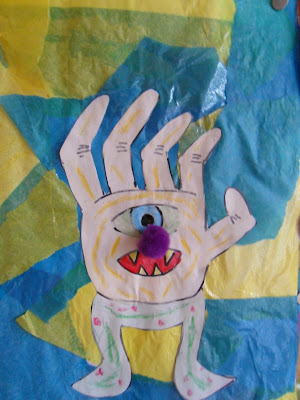Jean Michel Basquiat is one of my favourite modern American artists. His densely layered work
Untitled (Skull) is a masterpiece of raw power, primal energy and subtle, jazz-influenced flow. I teach a Basquiat inspired project every year, giving my students the chance to appreciate his unique artistic vision.
I've approached teaching Basquiat-style portraits in a number of ways, and I've used a wide array of materials and approaches - for example, one year we used corrugated cardboard, nails and soil from the centre's garden! This year I felt like sticking to more traditional media, and so here's a Basquiat inspired lesson involving oil pastel, marker pens, chalk pastel and acrylic paint.
First, students should choose from either coloured marker pens, chalk pastels or oil pastels and then scribble wildly all over the page. They can stop to change colour and begin new lines whenever they wish. Their lines can be angular and jagged or curved or organic - it's best to let their preferences and mood influence the marks they make.
Once a suitably tangled web of multi-coloured, scribble lines has been constructed, students can then change to either black marker pen or black pastel and begin to draw a heavier outline around the scribble, marking off the rough shape of a face, either in profile or straight on. Details like eyes, noses, ears, facial hair and glasses can then be added.
Any space left outside of the face outline should then be coloured with the student's choice of media. I used a blue oil pastel for my first example, yellow and pink acrylic paint for my second and light green chalk pastel for the third.
This lesson is a failsafe - students' needn't worry about getting it wrong as any 'mistakes' can easily be incorporated into the final piece.




































